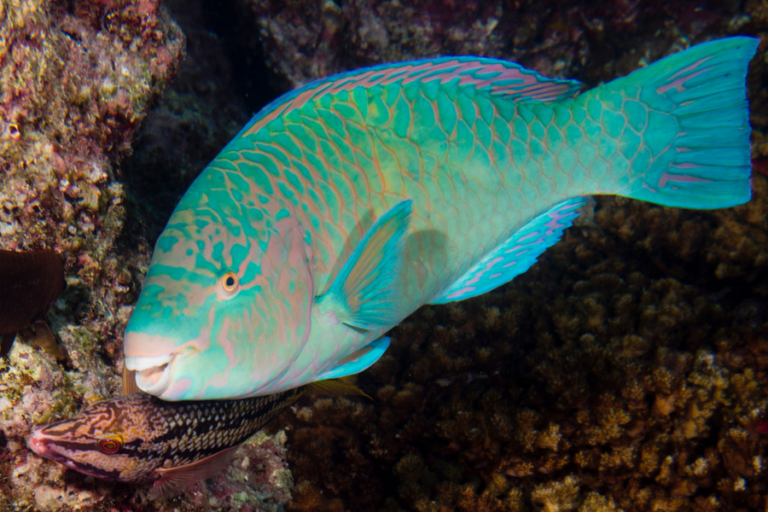

The tooth-bearing areas of the lower pharyngeals are elongated in reef species. In Chlorurus (excavators) and Hipposcarus and Scarus (scrapers), there is only one row of teeth occupying most of the width of the upper pharyngeal plate, together with an outer row of vestigial teeth. 4.94), whereas the tooth-bearing area of the lower pharyngeals is approximately square. Sparisoma, Cetoscarus, and Bolbometopon (excavators) possess three rows of teeth on each upper plate (although the outer row is much reduced, as in Fig.

Among reef species, the upper pharyngeals are more elongated than in browsers and the teeth are orientated transverse to the plate. The breadth of the lower pharyngeals is greater than the width. In browsing species, the upper pharyngeals are relatively broad and carry three rows of teeth, often in a chevron arrangement. There are differences in the pharyngeal dentition between the groups of parrotfishes ( Bellwood, 1994). Courtesy Horniman Museum & Gardens and Dr. Note the presence of newly formed teeth at the posterior end and worn teeth at the anterior end. Lower pharyngeal toothplate of parrotfish (species unknown): anterior to left. Members of the reef group are important in maintenance of the health of coral by preventing overgrowth of algae and sponges.įigure 4.96. 4.93), and it is thought that this mobility enlarges the gape and also allows the dental beak to adapt more closely to the coral surface during scraping or excavating ( Wainwright et al., 2004).
Parrot fish plus#
In the clade consisting of these two genera plus Chlorurus, the intramandibular joint between the dentary and the articular is mobile, as in many coral reef species (see page 46) ( Fig. These fishes have a less robust beak than the excavating species and do not have the notched cutting edge ( Bellwood and Choat, 1990).

Two genera- Scarus and Hippocarus-scrape the surface without damaging it. At the cutting edge alternate teeth project to give a notched appearance ( Figs. In this group, the beak is robust and covered with a thick layer of cement. In the “reef” group of parrotfishes, the primitive mode of feeding is excavation of the coral surface, ie, removal of part of the substrate including coral organisms and algae. It seems that rows of replacement teeth develop and move into position before their predecessors are shed. Parrotfish beaks resemble those of tetraodonts in shape, but they consist of superimposed rows of individual rounded teeth instead of stacks of elongated teeth ( Figs. Members of the reef group possess strong beaks made up of teeth cemented together by bone.

However, one Caribbean genus ( Sparisoma) removes algae from coral reefs by scraping or excavating the surface. Most of the members of this group browse on periphyton, seaweed, and seagrass. Members of the smaller “seagrass” group (20% of species) have a dentition that is not greatly different from that of wrasses: the teeth are arranged in diagonal rows and are not cemented together. (2002) identified two parrotfish lineages: a group mostly associated with seagrass and a group living on coral reefs.


 0 kommentar(er)
0 kommentar(er)
